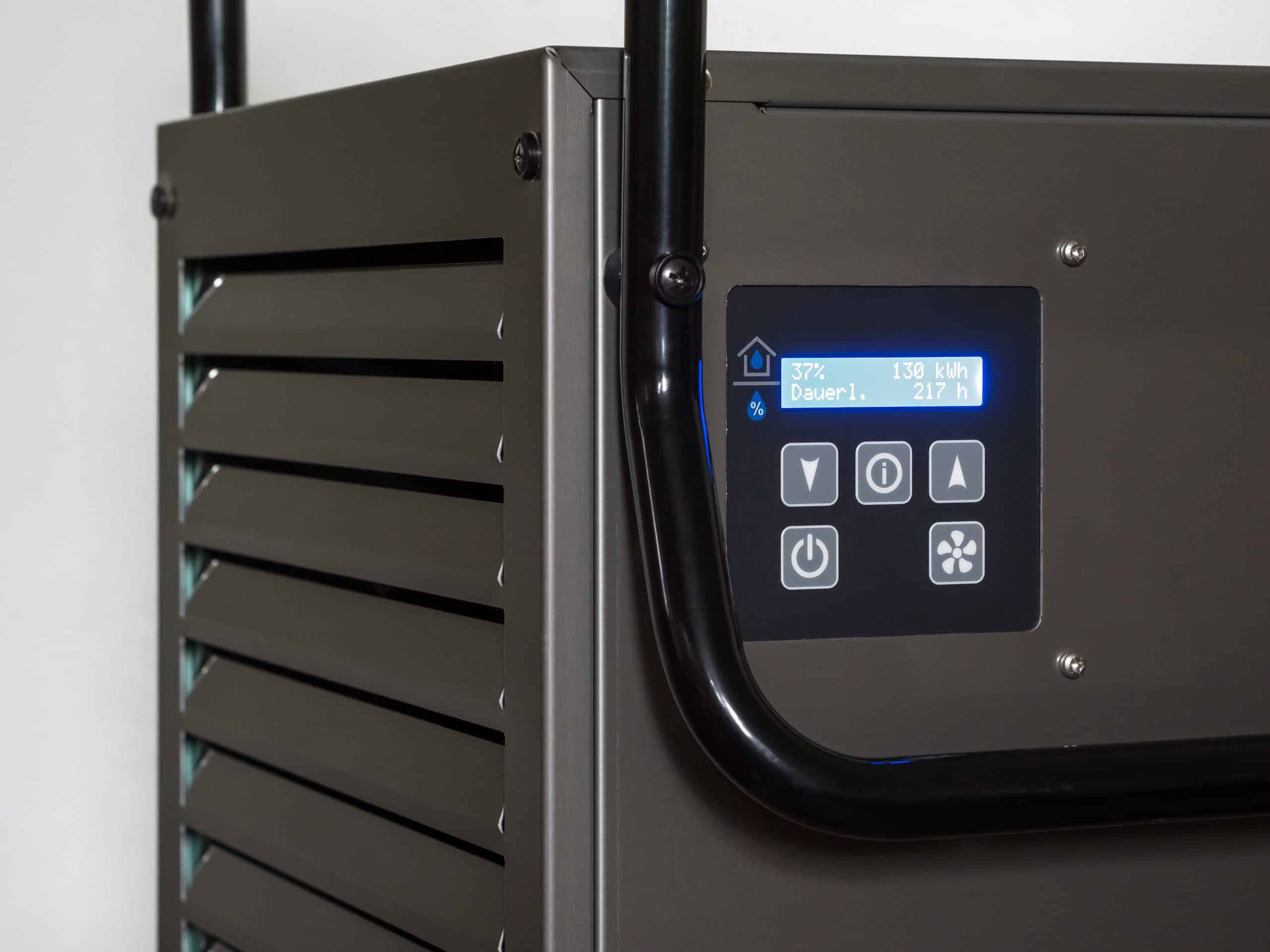A crawl space dehumidifier is a leading solution for humidity problems in residential crawl spaces. It’s crucial to understand how to install a dehumidifier in a crawl space and where to place a dehumidifier in the crawl space to maintain the humidity levels in your home. Keep reading to learn tips on installations and other essential information.
What Is a Dehumidifier?
A dehumidifier is a machine that removes moisture from the air before it circulates throughout your home. It fits in your crawl space and filters particles from the air. Humid air enters the dehumidifier, collects moisture and harmful particles, and releases dry air into the atmosphere.

Signs You Need a Dehumidifier in Your Crawl Space
Visible Condensation
It’s typical for crawl spaces to have some condensation, but even minor amounts can cause problems. This moisture builds up quickly in humid climates, leading to damaged wood beams, eventual flooding, mold, and mildew. To prevent these issues, getting a professional dehumidifier installation is crucial as soon as you notice condensation buildup.
Mold and Mildew
You need a dehumidifier if you notice mold or musty smells in your crawl or basement, as they can cause severe allergic reactions. Installing a dehumidifier reduces the humidity level and chance of condensation forming, preventing mold and mildew spores from developing and spreading throughout your home.
Structural Damage
If you already have rotting wooden beams and floorboards, shifted soil from moving water, damp insulation, and rust on metal fasteners, this signifies you need a dehumidifier. Moist conditions may also attract pests like termites.
Points to Consider When Choosing the Best Crawl Space Dehumidifier
Coverage Area
Installing a dehumidifier first depends on how large your crawl space is. Choose one that fits the square feet requirements of your crawl space. A dehumidifier that’s too small won’t successfully remove water, while one that’s too big causes unnecessary high energy bills. Getting the right size for your square feet requirements will help maintain the desired humidity level and air flow.
Humidistat
You can preprogram your dehumidifier before putting it in your crawl space. A humidistat feature detects the humidity levels and turns on the dehumidifier when they reach a set point. Preprogramming your humidifier eliminates the need to enter the area.
Defrosting System
A defrosting system is another vital part of a space dehumidifier, which keeps the dehumidifier at a warmer temperature during cold weather. The unit can maintain its dehumidifying operation with this function while avoiding freezing and damaging condensation coils. An automatic defrost feature is a feature that most good dehumidifier models will come with.
Condensate Pumps
Most crawl space dehumidifiers collect condensation and push it out of the crawl space via a drain line. The condensate pump is the mechanism that forces water to the drain line, preventing you from having to collect and empty it every time the basin fills up.
Noise Level
Smaller dehumidifiers offer quieter operations than larger models. Most smaller models create a noise level between 30 and 45 decibels.
Depending on your square footage needs, you may require a large dehumidifier. If you cannot get a quiet option to reduce noise, you can significantly reduce its sound by reducing its vibration with padding.
Cost and Energy Efficiency
The cost depends on your coverage requirements and the dehumidifier’s features. If you have a small budget, you can save on future expenses with an energy-efficient unit. Overall, larger, more advanced models will cost more. Having a remote control will allow for a restart after a power outage without having to go into confined spaces.
Crawl Space or Basement Dehumidifier Installation Process
Location
The first step to a crawl space dehumidifier installation is determining the perfect location. Professionals find the ideal spot and measure how many square feet the crawl space is. They’ll look for a place where there’s nothing to block airflow.
Foundation
The next step of the installation process is to ensure the foundation is level to prevent the dehumidifier from making much noise. A level foundation also helps water flow properly from the drain pan. It’s common for professionals to install dehumidifiers on concrete blocks.
Ducting
Ducts connect to the dehumidifier unit and allow the unit to take air samples from different areas of the crawl space. Better airflow facilitates faster, easier drying of the area. Some ducts can decrease the noise your dehumidifier makes.
Excess Water
The next step is to set up piping to allow the condensation to drain correctly. Professionals install a drainage hose leading from the drain pan to the main drain pipe. Some models require flexible tubing for gravity draining, while others require durable PVC pipes. The drainage hose is a key component and must remain unobstructed.
Benefits of Crawl Space Dehumidifiers
A dehumidifier system has many benefits, including better air quality, protection for your home’s structure, and a lower risk of contamination from pests. You’ll also experience a lower energy bill as lower humidity results in a cooler space. The air filter will also help remove dust mites. The best dehumidifier systems will maintain high performance, have low maintenance and save energy.
Frequently Asked Questions (FAQs) – Crawl Space Dehumidifiers
Do Dehumidifiers work in Crawl Spaces?
Dehumidifiers do work in crawl spaces. You’ll need to get an appropriately sized unit for your crawl space to remove moisture successfully. A cheap crawl space dehumidifier may be right for you if you have a smaller crawl space, but your energy bill may increase from the new appliance.
Should I run a Dehumidifier all the time?
It would be best if you run your dehumidifier for a minimum of 12 hours a day. The more frequently you use a dehumidifying unit, the better moisture control you’ll have over your crawl space. Ultimately, your home will have fewer foul odors and contamination from particles. The best crawl space dehumidifiers often come with remote control and energy star ratings.
Is a Crawl Space Dehumidifier really necessary?
A dehumidifier for your crawl space is necessary in many cases. While many situations make it optional, the best crawl space dehumidifier will remove moisture and help you avoid problems such as damaged foundation beams from extensive humidity and mold growth that could cause respiratory issues. It can also prevent termites and other insects from invading your home.
Conclusion
If you’re looking for a crawl space dehumidifier installation near me, the professionals at Attic Projects have the skill and knowledge necessary to make the perfect crawl space dehumidifier installation. Contact our team today.



